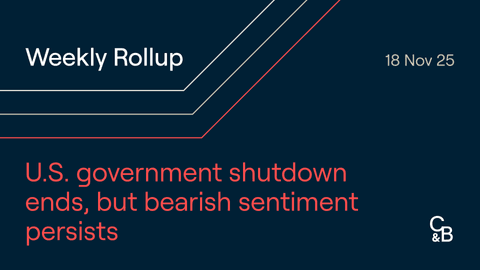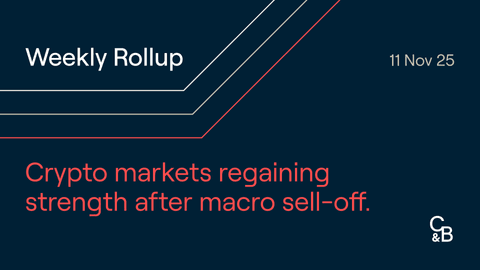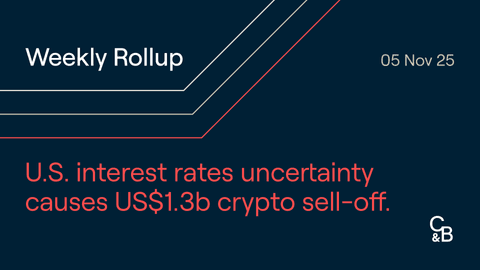Bitcoin
The first half of April saw Bitcoin’s high correlation to US equities continue. The candles on the chart below show Bitcoin’s price action so far this month, with the orange line displaying the movement of the S&P 500. Historically, Bitcoin’s correlation to equities has increased during times of uncertainty in traditional markets, and the last few months have been no different.
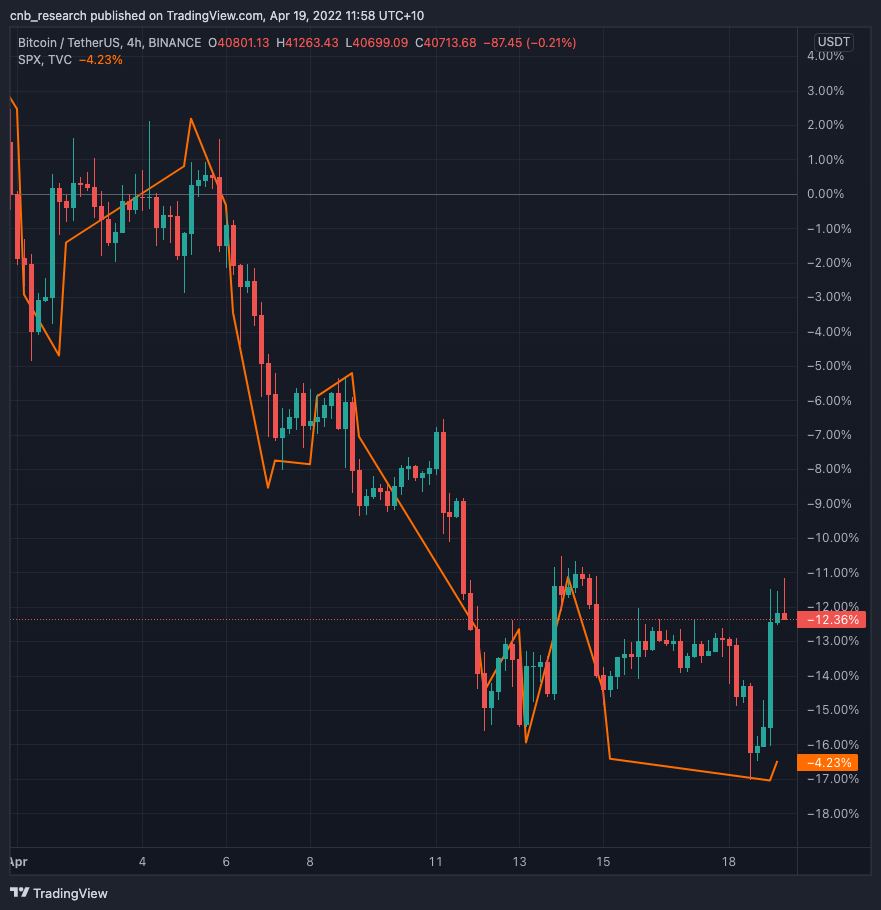
Equities have slipped in recent weeks, and Bitcoin has followed suit. After beginning the month at roughly $45.5k USD and reaching a peak of $47.5k USD, Bitcoin has retraced over 20%, dipping just below $39k USD at its lowest point over the weekend. The notion that the Federal Reserve will aggressively raise interest rates to combat inflation has been a source of concern in conventional markets. Furthermore, geopolitical concerns (Russia's continued invasion of Ukraine) and a new wave of Chinese lockdowns have contributed to the sell off of risk assets.
Ethereum
Over the previous two weeks, ETH has outpaced BTC. In general, ETH has a greater beta than BTC, which means it will outperform BTC when it trades higher and fall more than BTC when it trades down. Based on this, one would anticipate the ETH/BTC ratio to fall in recent weeks owing to BTC's weakening. Instead, ETH outperformed BTC, which is most likely due to the market beginning to price in the merge.
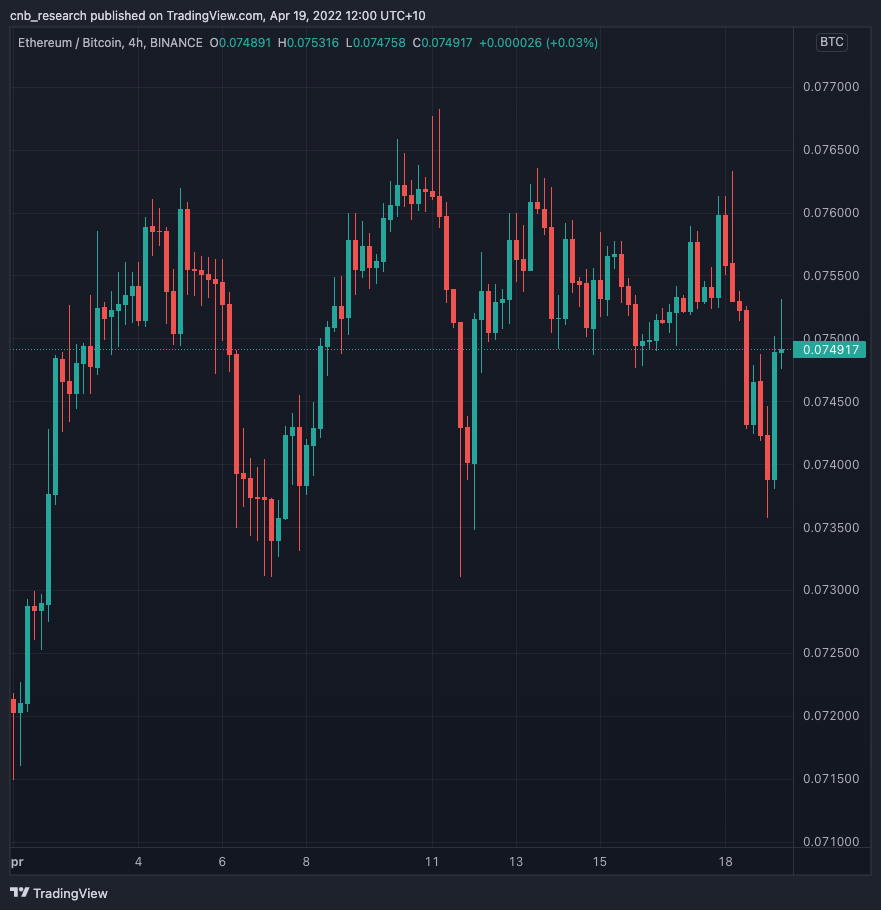
The upcoming merge involves Ethereum changing consensus mechanisms from proof-of-work to proof-of-stake. This would reduce Ethereum's environmental effect and allow holders to stake their ETH and earn a yield in exchange for helping to secure the network. Last week, Ethereum engineers produced a shadow fork of the Ethereum mainnet to test the merge, bringing the project one step closer to completion. While there were significant flaws, Ethereum developer, Marius Van Der Wijden described the test as ""near to a historical event.”
Altcoins
After three consecutive weeks of positive market sentiment from mid-March, all sectors experienced a sharp correction amid the multitude of ongoing issues, mirroring the price action of BTC. Up until the recent tumble, we were seeing outperformance from multiple tokens such as Anchor Protocol (ANC), Near Protocol (NEAR), Zilliqa (ZIL), Audius (AUDIO), and Ethereum Classic (ETC).
Starting with Terra, the Luna Foundation Guard (LFG), a Singaporean entity focused primarily as a reserve to help keep UST’s peg and led by Kwon, added $173 million in BTC over the weekend. Currently, LFG has 39,897.98 bitcoin in its wallet, worth approximately $1.59 billion. In addition to that, LFG and TFL, both organisations supporting the Terra blockchain, revealed that they have collectively acquired $200 million in Avalanche's AVAX tokens from the Avalanche Foundation. TFL executed a $100 million LUNA and AVAX swap to “strategically align ecosystem incentives.” LFG added $100 million AVAX to the UST reserve to support the UST/USD peg via an OTC deal. The mitigation of UST’s destabilisation risk led many investors to flood into the already popular Anchor Protocol (ANC) and pushed UST passed Binance’s stablecoin BUSD, making it the third largest stablecoin my market capitalisation, to date.
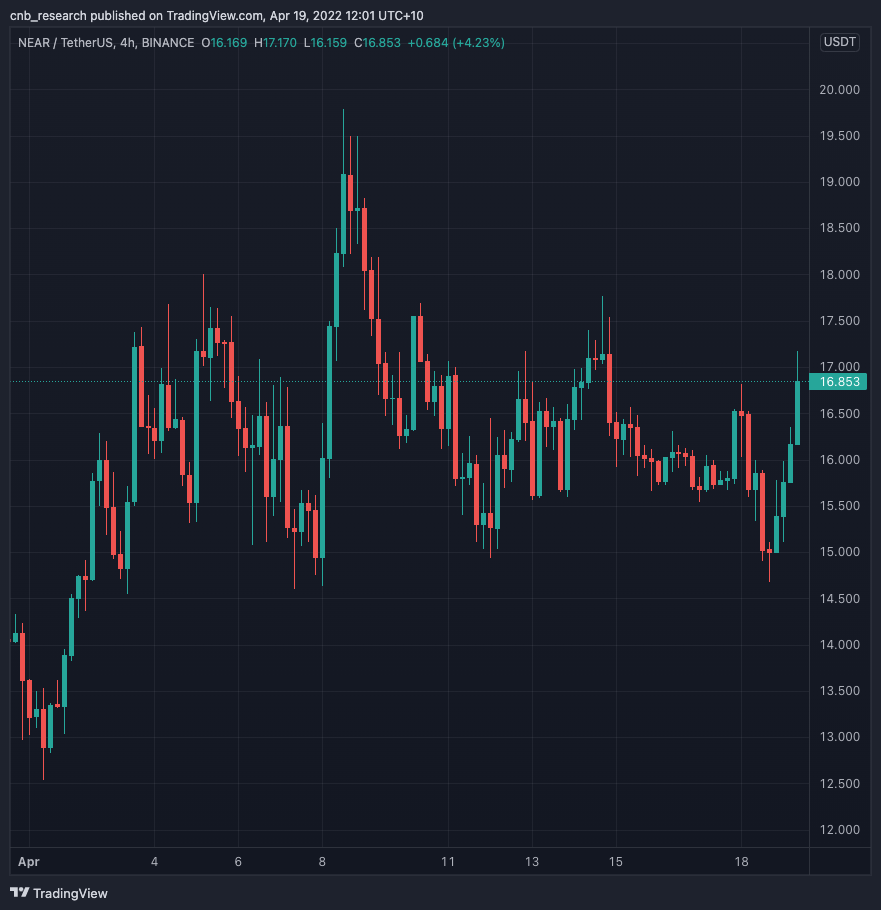
A token that made headlines due to rumours of a similar mechanism to Terra’s UST and staking APY of 20% was Near Protocol (NEAR). The NEAR token was eyeing new all-time-highs with news of a $350 million funding round led by Tiger Global and rumours of a native stablecoin (USN) acting as catalysts. Breaking away from the pact, NEAR has stayed up despite the market-wide corrections.

Last but not least, in unfortunate news, the blockchain gaming company Sky Mavis that is most popular for its metaverse gaming project Axie Infinity announced that an exploit was used to drain an estimated $622 million in Ethereum and USDC stablecoin that was stored on the Ronin bridge, a sidechain of the Ethereum network. Reportedly, the attacker used “hacked private keys” to sign transactions from five of the nine validator nodes on the Ronin network, including four of Sky Mavis’ own validators. Thus far, approximately $7 million of the hacked funds has been sent to the cryptocurrency mixing service Tornado Cash. In order to help reimburse the victims of the hack, Binance led a $150 million funding round. The Sky Mavis team has also come forward regarding plans of expanding the number of validators from five to twenty-one over the next three months.
NFTs

At the start of April, the Pudgy Penguins collection of 8,888 items sold for 750 ETH, or roughly $2.5 million during that time, to Netz Capital’s Luca Netz. This sale came just a few months after the project voted out the controversial founder Cole Villemain, who goes by the name “ColeThereum.” The decision was one that many community members and onlookers expected as the Penguins community disagreed with Villemain’s leadership and were heavily disappointed by the Christmas reveal of a new companion - mysterious eggs that hatched into fishing rods.
In more recent news, Meta has proposed a 47.5% fee on the sales of their “NFTs,” prompting Crypto Twitter and many big projects in the sector to voice their opinions. Previously, Meta and its CEO, Mark Zuckerberg, have criticised Apple for charging developers an exorbitant 30% fee for in-app purchases via the App Store. Less than two years from that comment, Meta plans to charge creators fees of up to 47.5% to sell virtual wares in its metaverse - a huge premium when compared with existing marketplaces such as Opensea which charge service fees of 2.5%.
Regulatory
A relatively quiet month so far on the regulatory front has seen two significant developments. Firstly, Binance has been granted approval in-principle to operate in Abu Dhabi. As part of recent attempts by the UAE to encourage investment in crypto, the Abu Dhabi Global Market, the local regulator, has provided in-principle approval for Binance to operate as a broker-dealer in digital assets including cryptocurrencies. This approval comes after FTX was separately awarded an operational license to conduct activities in Dubai.
Secondly, in Australia, the Commonwealth Bank of Australia’s (CBA) planned crypto services have been stalled due to intervention by the local regulator, ASIC. Simply put, the CBA’s plans to roll out access to a select number of crypto assets through its CommSec platform has been delayed after ASIC objected to the launch based on consumer protection concerns. ASIC has objected on the basis that sufficient target market and product disclosures, ordinarily required in relation to a financial product, were found to be lacking or missing entirely.
Further reading: What is proof of stake in crypto?
from Caleb & Brown Cryptocurrency Brokerage.


